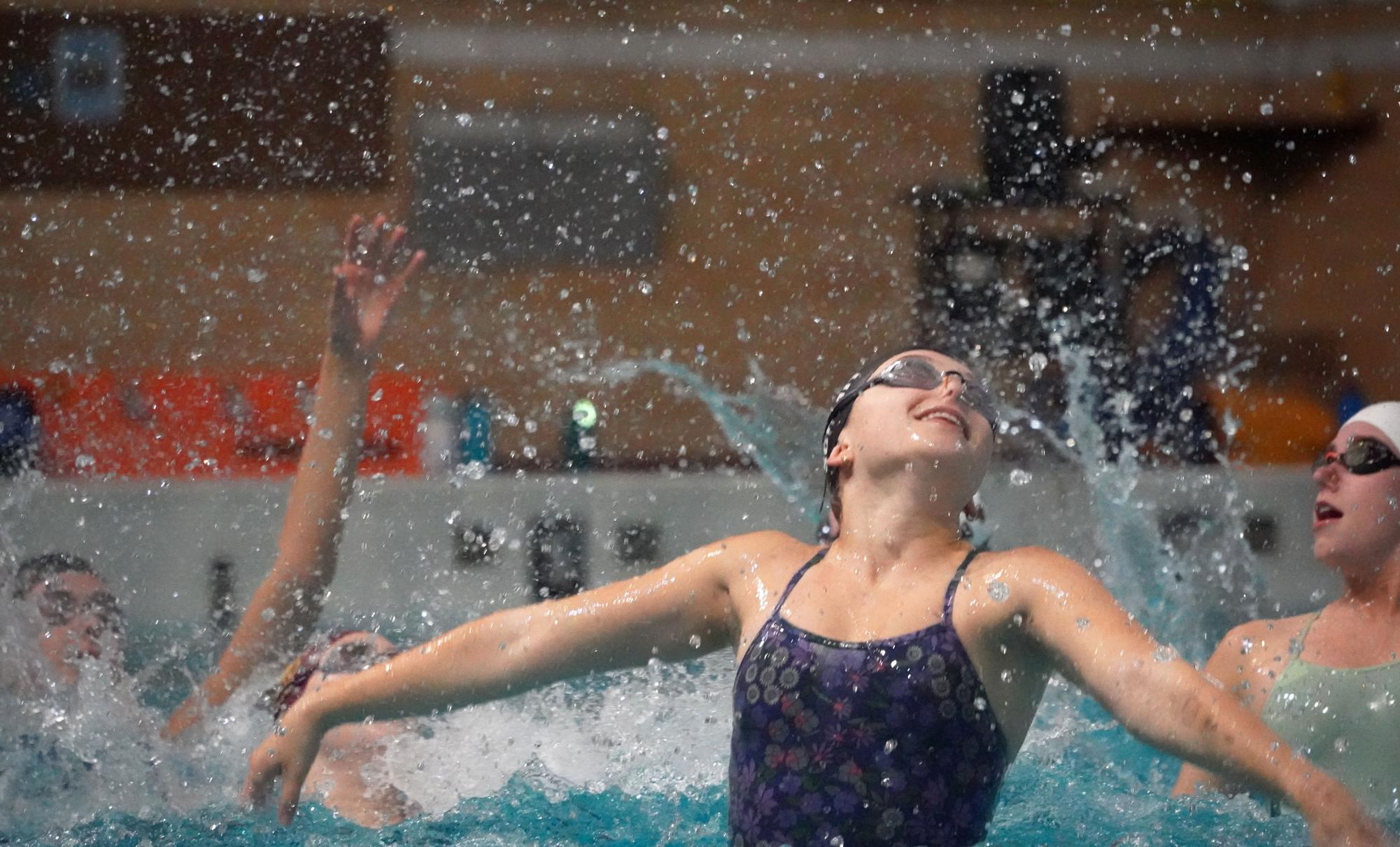Tucked away in the basement of Cooke Hall, the smell of chlorine lurks in the hallway, accompanied by swimmers shouting counts and splashing as they execute stunts in aesthetic fashion.
The swimmers in Cooke Hall on Wednesday night were not members of the Gophers swim team, but rather a group of about 20 swimmers training as part of the University’s club artistic swimming team, formerly known as synchronized swimming.
Some members started artistic swimming a decade ago, while others started just a few years ago. The swimmers hold backgrounds in dance, swim and dive, and gymnastics, but they all ended up on the same club team.
The team got in the water around 8 p.m. and started with warm-up laps to loosen their muscles before doing some heavy lifting.
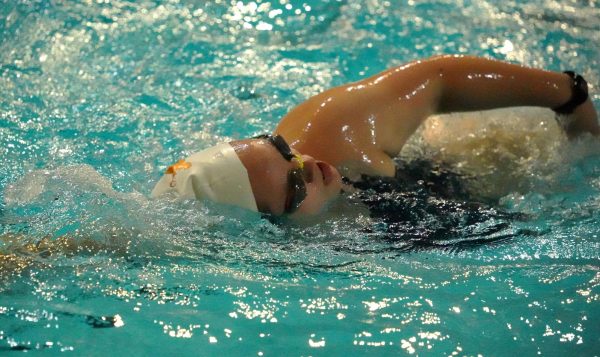
Minnesota’s team consists of 15 underclassmen who established bonds that go beyond the pool.
Sophomores Olivia Succio and MJ Florkey, who are roommates, said they love the team more than the sport at times.
“You’re so close in the water and spend so much time together,” Florkey said.
When asked if they spend time together outside of the pool, Succio and Florkey, along with senior Maya Kittelson said, “Yeah, a lot,” in unison.
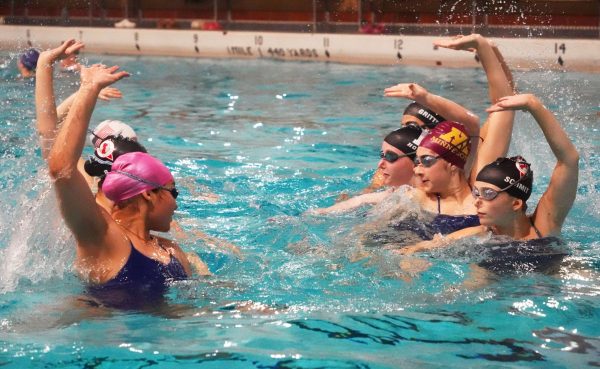
Throughout practice, the team demonstrated a willingness to learn and take in feedback from their assistant coach Rina Horii, who took videos of the team’s routine and broke down areas to focus on.
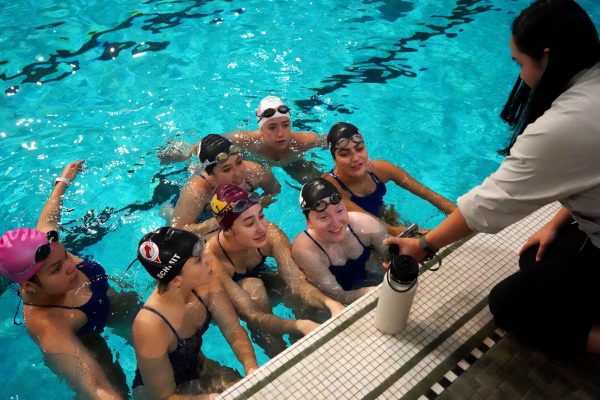
Horii attended the University of Stanford and competed on their varsity artistic swimming team in 2015 and 2016.
“It gave me a lot of experiences, like how to organize practice,” Horii said. “We’ve been drawing on the training I did in college.”
Horii said they have been using the University’s new dry-land training facility, something they did not have the option to do before.
Horii helped the Stanford artistic swimming team win the national title in 2016, but now she is more focused on building bonds with others who love the sport.
“I think the most enjoyable thing is being able to come to the pool and have fun,” Horii said. “Everyone can have a stressful day, but then they come and they bring a really great attitude, and it makes the whole experience really rewarding.”
According to Florkey, dance is the generic comparison for artistic swimming, but these women feel that artistic swimming is even more difficult.
In the pool, they have to focus on their breathing while lifting each other as well. Sophomore Isabella Collins even wonders if it is a contact sport.
“A lot of people are like ‘No, football is a contact sport,’ but I think that synchro is a contact sport,” Collins said. “There’s so many concussions, so many injuries. I always say that it’s a contact sport.”

When asked why people should watch artistic swimming, sophomore Delaney Chelgren had a very quick response.
“It’s so much fun and you won’t regret it. I promise,” Chelgren said.
Sophomore Richa Advani started artistic swimming during her freshman year of high school because her mom said she would buy her Spotify Premium if she did. She said she invites her friends to watch.
“All my friends that I’ve invited are like ‘Oh my God, I didn’t know what you were talking about before I came and saw it,’” Advani said.
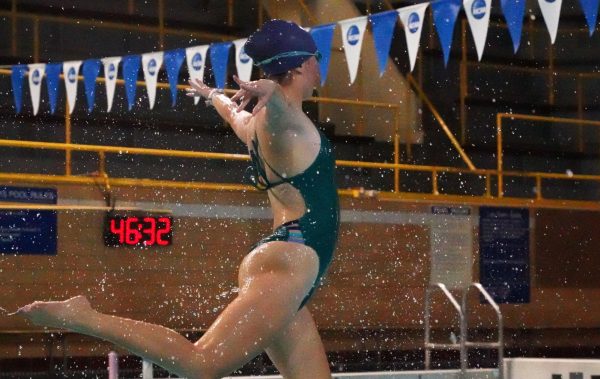
The swimmers on the team are not just building relationships with their teammates, but the swimming community as a whole.
“I think something unique about this sport is you go to nationals, you go to big competitions, and you’re cheering for every team,” Collins said. “Because it’s such a niche sport, it’s really cool that even across state lines you can cheer for people.”
Collins added that there is a strong community from high school, club and even varsity artistic swimming.
Advani and Chelgren said they often meet other artistic swimmers outside of the pool who recognize them or have heard of their coaches.
When practice is done for the night, the team works together to set up the pool for the next day. They swim the lane lines to the other end of the pool, hook them in and tighten them with a wrench.
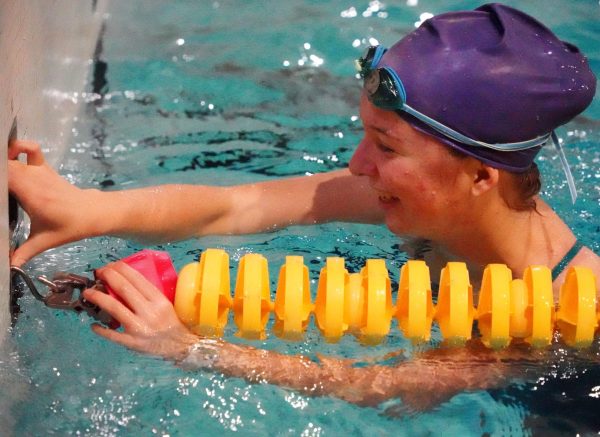
Despite only competing a few times a year, the artistic swimming season starts in early September and does not end until late March. According to Kittelson, their only home showing is a showcase for family and friends in early April.
Correction: The club is an artistic swimming team, not an artistic gymnastics team. MJ Florkey’s pronouns are they/them, not she/her. The team’s season ends in March, not May, and they do not have a home meet, only a showcase.



